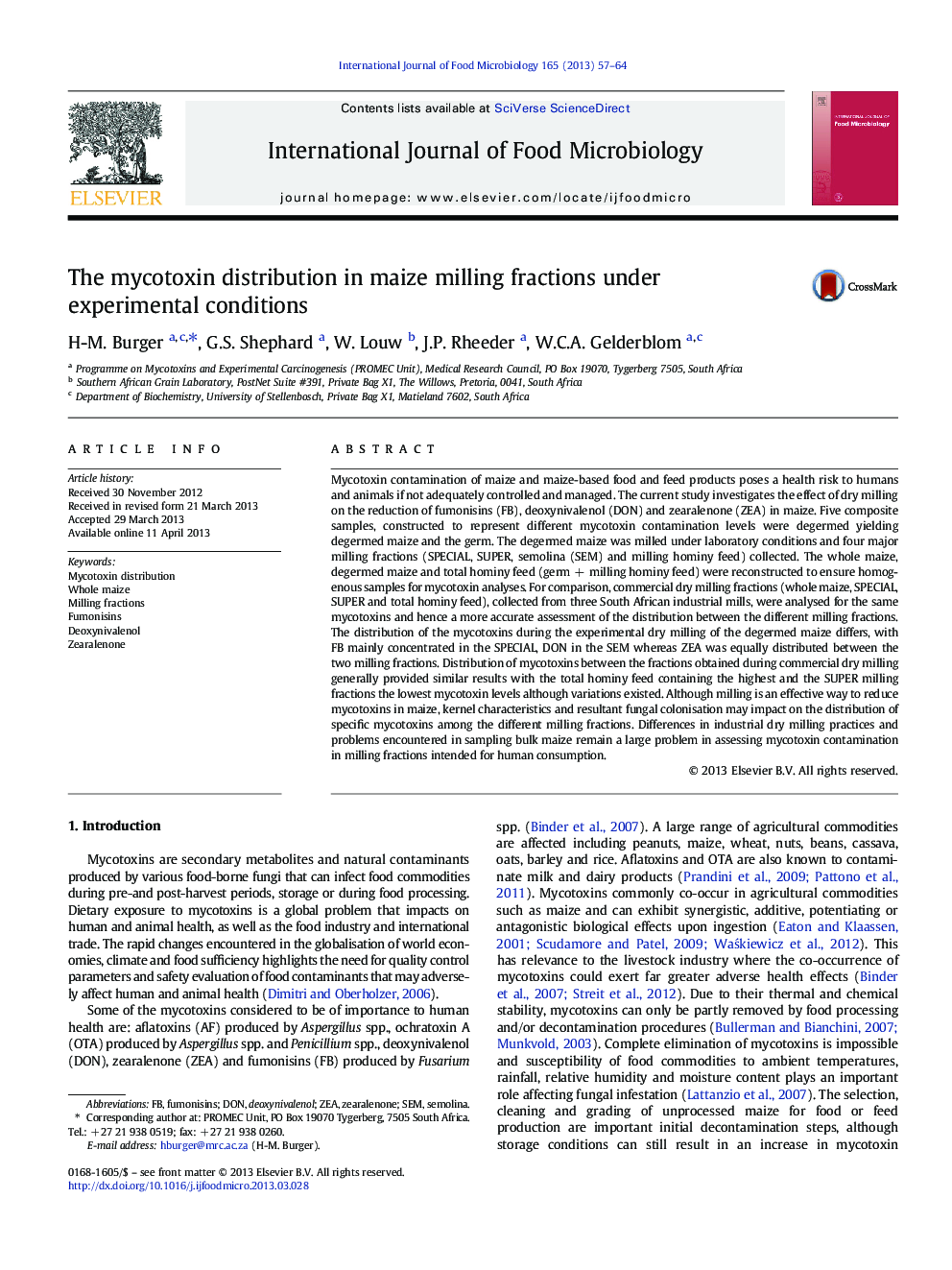| کد مقاله | کد نشریه | سال انتشار | مقاله انگلیسی | نسخه تمام متن |
|---|---|---|---|---|
| 4367211 | 1616622 | 2013 | 8 صفحه PDF | دانلود رایگان |

• Distribution of Fusarium mycotoxins during experimental dry milling differed between the milling fractions
• The total hominy feed contained the highest and the SUPER milling fractions the lowest levels of mycotoxins.
• Distribution of mycotoxins during commercial dry milling corresponded with experimental milling
• Milling is an effective way to reduce mycotoxins in maize.
Mycotoxin contamination of maize and maize-based food and feed products poses a health risk to humans and animals if not adequately controlled and managed. The current study investigates the effect of dry milling on the reduction of fumonisins (FB), deoxynivalenol (DON) and zearalenone (ZEA) in maize. Five composite samples, constructed to represent different mycotoxin contamination levels were degermed yielding degermed maize and the germ. The degermed maize was milled under laboratory conditions and four major milling fractions (SPECIAL, SUPER, semolina (SEM) and milling hominy feed) collected. The whole maize, degermed maize and total hominy feed (germ + milling hominy feed) were reconstructed to ensure homogenous samples for mycotoxin analyses. For comparison, commercial dry milling fractions (whole maize, SPECIAL, SUPER and total hominy feed), collected from three South African industrial mills, were analysed for the same mycotoxins and hence a more accurate assessment of the distribution between the different milling fractions. The distribution of the mycotoxins during the experimental dry milling of the degermed maize differs, with FB mainly concentrated in the SPECIAL, DON in the SEM whereas ZEA was equally distributed between the two milling fractions. Distribution of mycotoxins between the fractions obtained during commercial dry milling generally provided similar results with the total hominy feed containing the highest and the SUPER milling fractions the lowest mycotoxin levels although variations existed. Although milling is an effective way to reduce mycotoxins in maize, kernel characteristics and resultant fungal colonisation may impact on the distribution of specific mycotoxins among the different milling fractions. Differences in industrial dry milling practices and problems encountered in sampling bulk maize remain a large problem in assessing mycotoxin contamination in milling fractions intended for human consumption.
Journal: International Journal of Food Microbiology - Volume 165, Issue 1, 1 July 2013, Pages 57–64